Family : Scombridae

Text © Giuseppe Mazza

English translation by Mario Beltramini
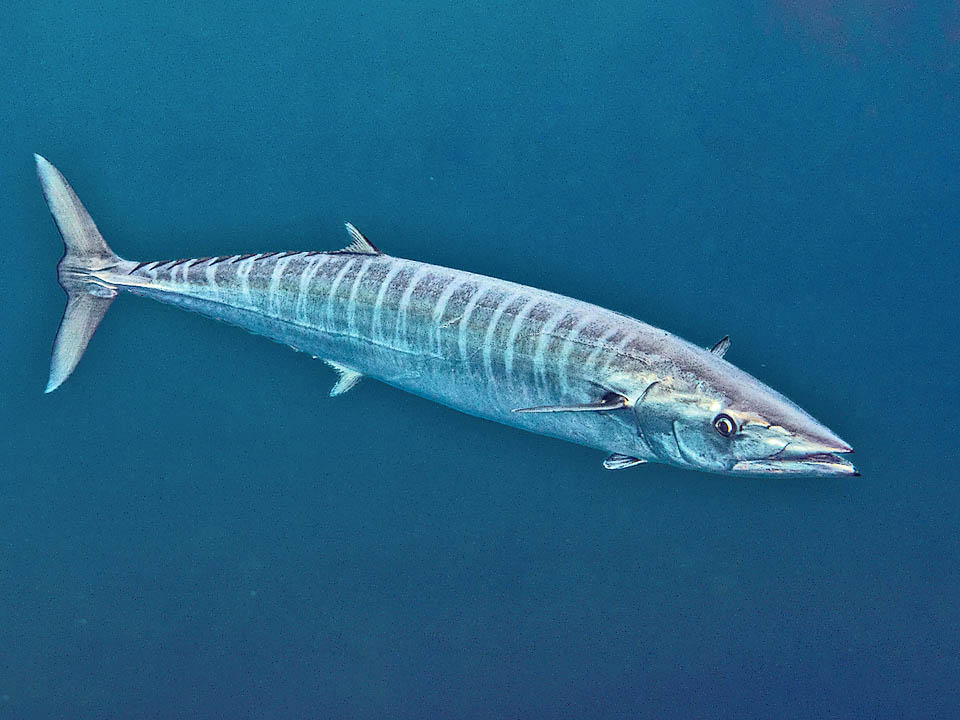
Even 260 cm long, with 24-30 cobalt blue vertical Y-shaped bars, at times double or broken, Acanthocybium solandri is a giant in the mackerels family © www.carlosestape.photoshelter.com
Relative to the Atlantic mackerel (Scomber scombrus) and commonly known as Wahoo, Acanthocybium solandri (Cuvier 1832) belongs to the class of the Actinopterygii, the ray-finned fish, to the order of the Perciformes or of the Scombriformes depending on the taxonomists, and to the family of the Scombridae, that counts 15 genera and species, fast-swimming, present in the tropical and subtropical seas, and at times in brackish waters.
With 260 cm in length and 83 kg, although the normal size is about 170 cm, Acanthocybium solandri is one of the giants of the family together with the King mackerel (Scomberomorus cavalla) even if not reaching the size of the Atlantic bluefin tuna (Thunnus thynnus) who easily exceeds 3 m.
The genus Acanthocybium, created by Gill in 1862, originates from the Greek “akantha” spine, with reference to the numerous spiny rays of the dorsal fin, and “kybion”, tuna, to highlight its kinship.
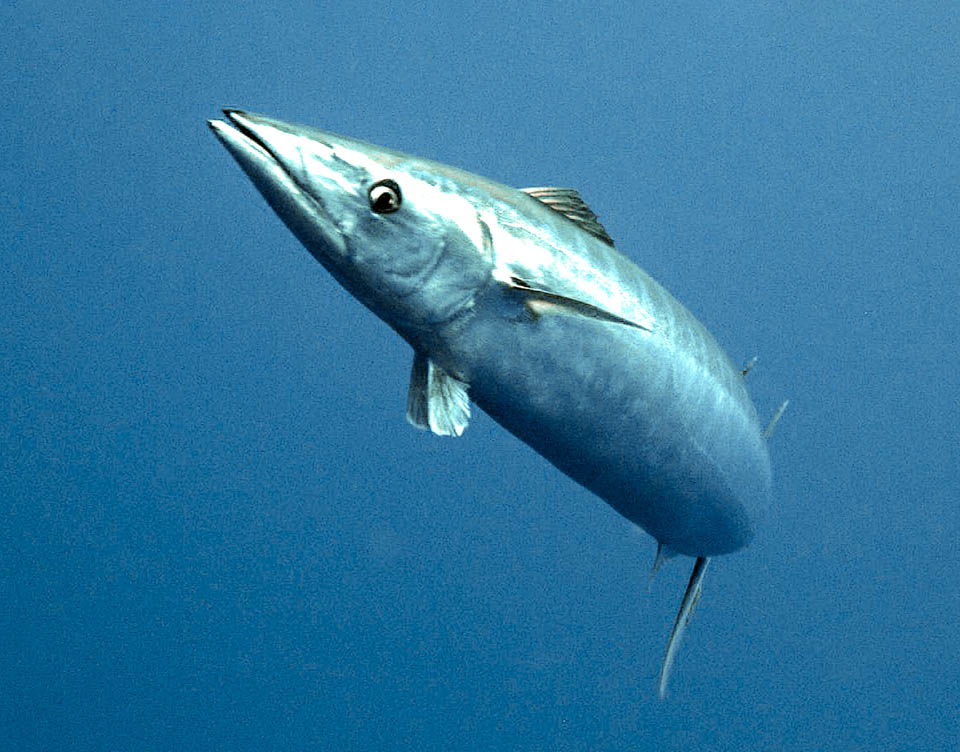
Size aside, it is easily recognized by the characteristic sharp snout, resembling a beak, that takes up half of the head © craigjhowe
The specific term solandri, of Solander in Latin, instead honours the memory of the Swedish naturalist Daniel Solander (1733-1782) who helped Cuvier in his work with drawings and findings.
Zoogeography
Acanthocybium solandri is present in the Atlantic, Indian and Pacific Oceans with some sightings reported in the Mediterranean.
Ecology-Habitat
The Wahoo loves the temperatures between 18,2 and 27,6 °C, migrating sometimes, during the torrid summers, in cooler locations. Usually it moves, solitary or in small groups, between the surface and 12 m in depth, but goes even lower, around 20 m, a sighting at 183 m is reported.
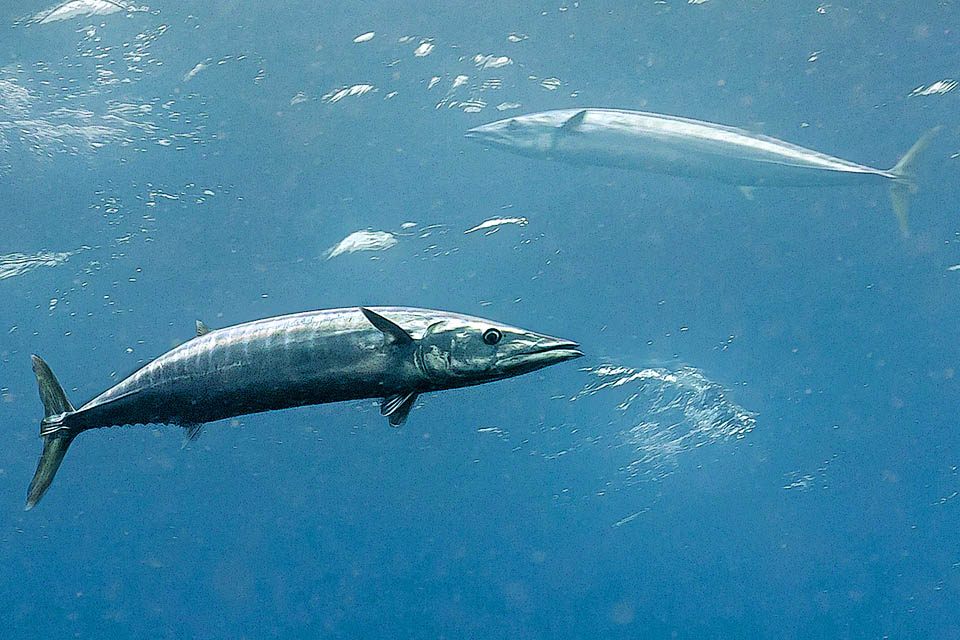
Present in the temperate-warm waters of all seas, mainly swims offshore and in surface, preying fish, cephalopods and crustaceans © www.carlosestape.photoshelter.com
Morphophysiology
The body of Acanthocybium solandri, slightly compressed on the sides, fusiform and elongated, ends in a long and sharp snout, like a beak, that occupies half of the head. The mouth is ample with strong, triangular, compressed and finely serrated teeth.
Unlike the little tunas such as Euthynnus lineatus who does not have it, this has a swim bladder, but the gill rakers are missing.
There are two dorsal fins. The first, much longer, has 23-27 spiny rays and together with the second counts 12-16 unarmed rays. Then there are 8-9 pinnulae, whilst below, after the anal, equipped with 1 spine and 12-14 soft rays, the pinnulae are 9.
The pectoral ones have 22-24 unarmed rays, and the caudal is deeply forked for a fast swim with peaks of 45 km/h.
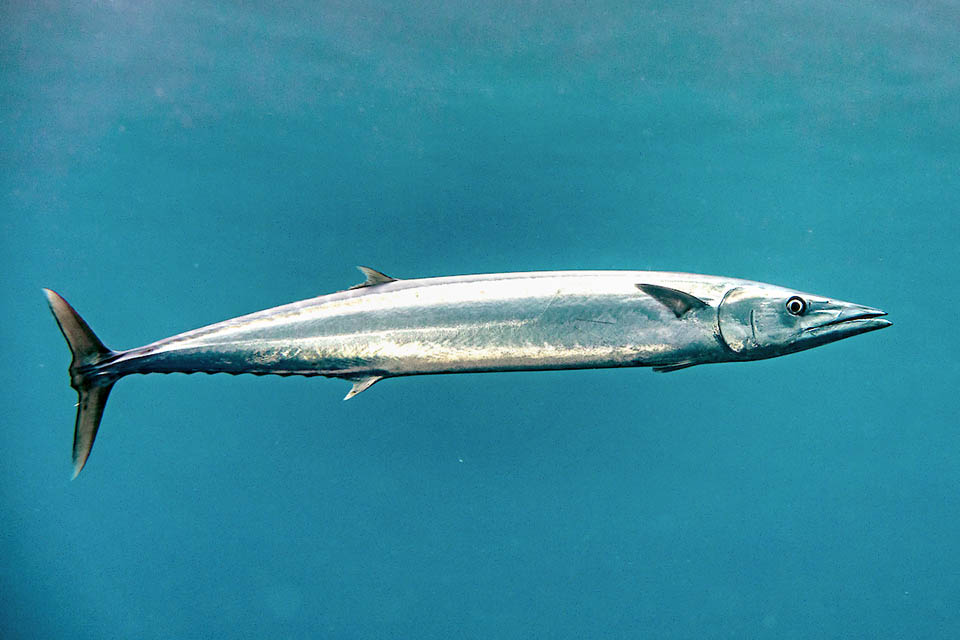
Although at times at ciguatera risk, its flesh is excellent, and for size and combativeness is a prey coveted by sport fishermen © www.carlosestape.photoshelter.com
At the base of the tail, a big keel sided by other two, smaller, improve the hydrodynamics. The body is covered by small scales and the lateral line curves sharply downwards, centered on the first big fin. The back is green-bluish
iridescent and the sides, silvery, have 24-30 cobalt blue vertical bars, at times double or broken in a Y shape.
Ethology-Reproductive Biology
Acanthocybium solandri reproduces entrusting floating eggs to the currents throughout almost all the year, as that later they are often found together with larvae and juveniles at different development stages.
It preys, mostly on the surface, pelagic fishes, cephalopods and crustaceans and is in turn attacked by the sharks, especially Carcharhinus albimarginatus, and other big predators.
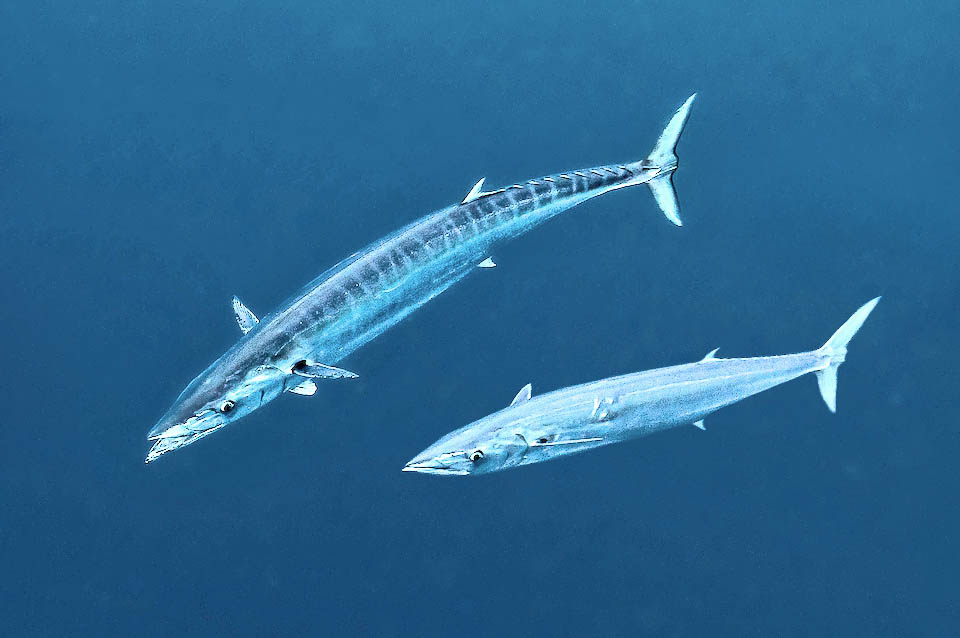
However it is not considered an endangered species due to the vast diffusion and its stable populations © www.carlosestape.photoshelter.com
Its flesh is excellent, and due to its combativeness is a coveted prey for sport fishermen, even if in some places, when it feeds on fishes that store in their diet the toxin produced by the dinoflagellate Gambierdiscus toxicus are reported instances of ciguatera.
The fishing vulnerability keeps however moderate, marking 46 on a scale of 100, and the resilience, mediocre, allows the doubling of the populations in 1,4-4,4 years. The populations are stable and considering also the wide diffusion, Acanthocybium solandri appears since 2022 as “LC, Least Concern” in the IUCN Red List of the endangered species.
Synonyms
Cybium solandri Cuvier, 1832; Cybium sara Lay & Bennett, 1839; Acanthocybium sara (Lay & Bennett, 1839); Cybium petus Poey, 1860; Cybium verany Döderlein, 1872; Acanthocybium forbesi Seale, 1912; Scomber amarui Curtiss, 1938.
→ For general information about FISH please click here.
→ For general information about BONY FISH please click here
→ For general information about CARTILAGINOUS FISH please click here.
→ To appreciate the BIODIVERSITY of BONY FISH please click here.
→ To appreciate the BIODIVERSITY of CARTILAGINOUS FISH please click here.
